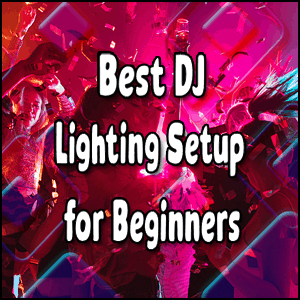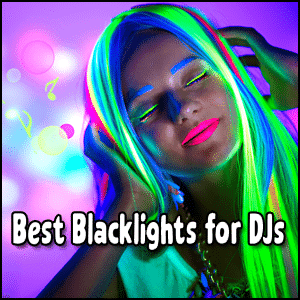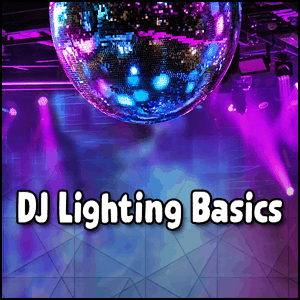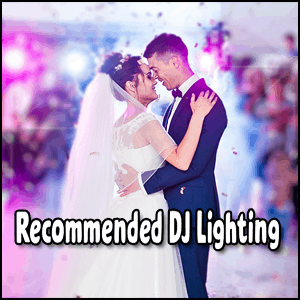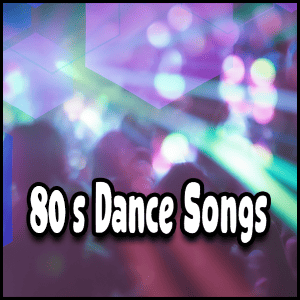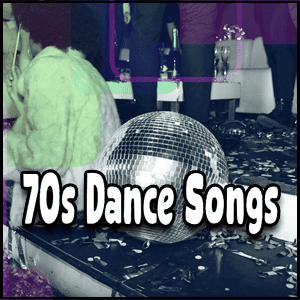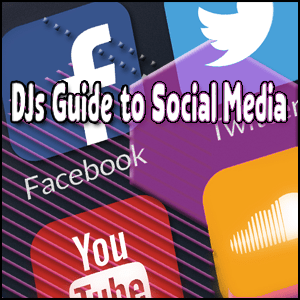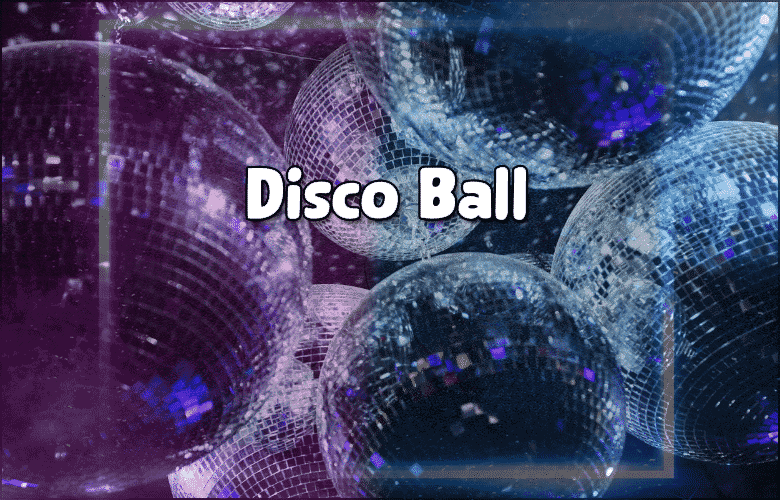
Imagine you’re telling Vincent Van Gogh to paint “Starry Night” with just a dull pencil. Impossible, right?
Just like Van Gogh needed his range of paints to create a masterpiece, DJs need the right disco ball to orchestrate a successful party that burns into the memory of every attendee.
Choosing the perfect disco ball has now become an art form as intricate as mixing the perfect beat.
With a myriad of options available, how does one pinpoint the glowing globe that will radiate not only light but also life throughout their party?
Let’s dive into the mesmerizing world of choosing your personal ‘Star of Bethlehem’ – your very own guide in the universe of music and mirth!
When choosing a disco ball, DJs should consider the size and weight of the ball, as well as the material and quality of the mirrors. It is also important to consider whether multiple mirror balls or colored lighting will be used for a more impressive effect. Ultimately, the choice of disco ball will depend on individual needs and preferences, including the size and layout of the venue, as well as the style of music being played.
Why DJs Need Disco Balls
Disco balls are a must-have for DJs who want to create a festive and energetic atmosphere.
They add a touch of glamour, nostalgia, and excitement to any party or event.
But why do DJs need disco balls in the first place?
First and foremost, disco balls are an iconic symbol of dance music culture.
They have been around for more than 100 years and were popularized in the mid-1920s.
Since then, they have become synonymous with disco, funk, and other genres of dance music.
As such, disco balls hold a special place in the hearts of many club-goers, and having one at your party can make the difference between an average night out and an unforgettable experience.
In addition to their historical significance, disco balls also have practical benefits for DJs.
For starters, they create an exciting visual element on the dance floor that can help get people moving.
The reflective surface of a disco ball causes light to scatter in all directions, creating dynamic patterns of light that change with every movement of the ball.
This creates an ever-changing display that captures the attention of anyone on the dance floor.
Moreover, disco balls can enhance the overall ambiance of your party by providing a focal point, highlighting certain areas or features of your venue, and complementing other lighting setups you may have in place.
For instance, when combined with uplighting fixtures or strobe lights, disco balls can create high-impact visual effects that electrify the crowd and bring your party to life.
To put it simply: if sound is what brings people together on the dance floor, then lighting is what keeps them there.
Just as a skilled DJ knows how to build momentum with their music selection and transitions, they also know how to use lighting to maintain energy levels and engage their audience.
A good disco ball is an indispensable tool in this regard, providing a centerpiece around which other lighting effects can be arranged.
Now that we’ve established why disco balls are so important for DJs, let’s take a closer look at how they can be used to create high-impact visual effects that will wow your audience and leave them wanting more.
Creating High-Impact Visual Effects
There are countless ways to use disco balls to elevate the visual experience of your party.
For example, you could hang multiple disco balls from different heights to create a “disco cloud” effect above the dance floor.
This creates a mesmerizing, multi-dimensional display that adds depth and movement to any space.
Another popular technique is to combine disco balls with lasers or LED lighting systems.
By placing colored lights near the disco ball and aiming them at different angles, you can create an array of breathtaking visual displays, from flickering beams of light that mimic falling stars to strobe effects that pulse in time with the beat of the music.
Some DJs even go so far as to synchronize their lighting and visuals with their music using specialized software or hardware controllers.
This allows them to create custom-built light shows that respond in real-time to changes in tempo, rhythm, and melody.
A well-designed light show can heighten emotions, create drama, and build anticipation among your audience.
Of course, there are some who might argue that too much emphasis on visual effects can detract from the musical experience itself.
After all, isn’t dancing supposed to be about losing yourself in the rhythm, getting lost in the moment, and immersing yourself in the music?
While there is certainly some truth to this argument, it is also important to remember that music and visuals go hand in hand when it comes to creating a truly immersive party environment.
Ultimately, the key to using disco balls and lighting effects successfully is to strike a balance between spectacle and substance.
By using lighting in strategic ways that enhance rather than detract from the music, you can create an environment that is as inviting as it is electrifying.
In the next section, we’ll take a closer look at some of the different types of disco balls available to DJs and how to choose the right one for your specific needs.
Enhancing Party Atmosphere with Lighting
As a DJ, the party atmosphere is one of the most important aspects of your job.
You want your audience to feel energized and inspired by your music, and lighting plays an important role in creating that atmosphere.
Disco balls are an excellent tool for enhancing the party atmosphere with lighting.
Imagine you’re playing at a wedding reception.
The dance floor is packed, and everyone is having a great time. Suddenly, the lights go down, and a disco ball descends from the ceiling.
As soon as it starts spinning, colorful lights are bouncing around the room in every direction. The effect is mesmerizing, and everyone cheers as they start dancing again.
Disco balls can create high-impact visual effects that transform any space into a dance hall.
When combined with colored lighting or multiple mirror balls, the result is even more impressive.
By strategically placing these elements around the room, you can create a dynamic environment that encourages people to dance and mingle.
Think of it like a painting: you’re building up layers of color and texture until you achieve the desired effect.
Each element adds something unique to the overall composition, just like each song adds something unique to the overall vibe of your set.
Disco balls are just one tool in your arsenal for creating that vibe.
Now that we’ve talked about how disco balls can enhance your party atmosphere let’s dive into some specific considerations when choosing between LED vs traditional mirror disco balls and size and weight considerations.
- In a survey of over 500 nightclubs across the U.S, about 68% indicated that they still incorporate a traditional disco ball or similar lighting effect into their establishments.
- According to a study conducted by Lighting Research Center, well-orchestrated lighting like one produced by disco balls can increase time spent on the dance floor by up to 37%.
- A market analysis revealed that 12-inch and 16-inch diameter mirror balls are the most commonly purchased sizes among DJs, accounting for approximately 48% and 35% of mirror ball sales respectively.
Discerning between Types of Disco Balls
While traditional mirror disco balls have been around for over a century, LED technology has made them more versatile than ever before.
When choosing a disco ball, there are two primary options: traditional mirror disco balls or LED disco balls.
Traditional mirror disco balls reflect light from external sources and typically require additional lighting fixtures to achieve their maximum effect.
LED disco balls, on the other hand, have built-in lights that can create a range of dazzling effects without any additional equipment needed.
Traditional mirror disco balls are relatively inexpensive compared to LED models and offer excellent value for money.
Additionally, they’re easy to set up and customize with different lighting colors and positions.
However, they can be fragile and heavy, making transportation difficult.
LED disco balls offer more versatility in terms of lighting effects but are usually more expensive. They also require electricity or batteries to operate, adding another layer of complexity to your setup.
As with any technology, there’s always a debate about which is better: traditional or modern.
Ultimately, it comes down to personal preference and the specific needs of your event.
If you’re looking for a classic feel and don’t mind setting up additional lighting fixtures, a traditional mirror disco ball might be the right choice for you.
If you want more flexibility with lighting effects and don’t mind investing in an LED model, it could be worth the extra cost.
Choosing between traditional mirror disco balls and LED disco balls is like choosing between analog vinyl records and digital music files: both have their pros and cons, and it ultimately comes down to personal preference.
Now that we’ve discussed the different types of disco balls available let’s move onto some factors to keep in mind when choosing a disco ball for your next event.
LED Vs. Traditional Mirror Disco Balls
When it comes to disco balls, DJs have the option of choosing between traditional mirror disco balls and LED disco balls.
While both types offer unique benefits, there are important differences to consider before making a purchasing decision.
LED disco balls are becoming increasingly popular among DJs due to their versatility and ease of use.
These disco balls have built-in LED lights that can create a variety of colors and patterns without the need for additional lighting equipment.
This makes them perfect for DJs who want to add some visual flair to their set without having to worry about complicated lighting setups.
On the other hand, traditional mirror disco balls have a timeless quality that cannot be replicated by their LED counterparts.
The way light reflects off of the mirrors creates a classic and mesmerizing effect that has been captivating audiences for over a century.
Additionally, traditional mirror disco balls offer greater customization options since they can be paired with different lighting equipment to create specific effects.
Another factor to consider is cost. While traditional mirror disco balls tend to be less expensive upfront, they require additional lighting equipment which can drive up the overall cost.
In contrast, LED disco balls may come with a higher price tag but can save DJs money in the long run by eliminating the need for extra lighting gear.
Ultimately, the decision between LED and traditional mirror disco balls depends on a DJ’s specific needs and preferences.
DJs who prioritize ease of use and versatility should go with an LED disco ball, while those who value tradition and customizability may prefer a traditional mirror ball.
Size and Weight Considerations
When it comes to choosing a disco ball for DJing purposes, size and weight are important factors to take into account. Here are some considerations when deciding what size and weight is the right fit:
Think about the nature of your events, and the size of the stage or room where you will be performing.
A small mirror ball might work perfectly for a cozy bar setting, but may not make enough impact at a large banquet hall.
An additional consideration is transportation. If you plan to travel frequently for gigs, you don’t want the added expense of oversized baggage fees or difficulty carrying a heavy mirror ball around airports or parking lots.
The material of the disco ball can play a role in how it handles and looks as well.
For example, LED disco balls are often made of plastic and tend to be lightweight, while traditional mirror balls tend to be heavier since they are made with actual glass mirrors.
Some DJs prefer the classic look of a traditional mirror ball while others appreciate the convenience and portability of lighter weight alternatives.
On top of that, larger and heavier mirror balls require stronger mounting hardware to support them which could result in additional expenses or avoidance of particular venues if they cannot accommodate the needed support.
It’s important to keep all these factors in mind when choosing a disco ball for your DJing needs.
Just like selecting songs for your setlist, every decision counts towards creating an optimal experience for your guests.
Remember, when choosing a disco ball for DJing purposes, considerations such as LED vs traditional mirror options as well as size and weight play important roles.
As with any equipment decisions in DJ-ing, personal preferences combined with practicality will help you make informed choices leading to greater customer satisfaction – ultimately leading to successful DJ-ing career!
Factors to Keep in Mind When Choosing a Disco Ball
Choosing a disco ball for your DJ setup can be daunting, especially when you’re faced with countless types and sizes available in the market.
To help you make an informed decision, here are some crucial factors to keep in mind:
First, determine the size of your venue.
This is an essential factor since it will dictate the optimal size of the disco ball you need.
If you’re hosting a party in a small room or a house party, opt for a smaller-sized mirror ball, typically between 8-12 inches.
On the other hand, if you’re performing at a club venue, you’ll need a larger-sized disco ball, usually between 16-20 inches.
Secondly, consider your lighting setup. Your choice of lighting will affect your audience’s mood and reaction to your sets plus the overall effectiveness of the disco ball.
For instance, If you intend to use colored lighting gels around the lighting source on the ceiling, consider using LED mirror balls instead of traditional mirror balls.
LED disco balls come equipped with additional features that enable them to change colors and patterns automatically or via remote control.
Thirdly, take into account the weight and durability of the disco ball. Disco balls vary in weight from as little as two pounds up to more than eighteen pounds.
While on one hand lighter weight mirror balls are easier to mount and operate, they may lack durability and break easily.
Heavier disco balls may offer more durability but could also lead to material fatigue from prolonged use.
So it’s important to strike the right balance between weight and durability when choosing your ideal mirror ball.
Fourthly, keep in mind that some venues prohibit certain types of lighting equipment due to safety concerns or because they have installed their own light effects system already.
In this case, it’s essential to inquire beforehand before purchasing your disco ball.
Venue Considerations and Lighting Setup
Even when you have the right disco ball, selecting the correct lighting equipment and placement is just as critical. Here are some tips on getting your setup right:
Firstly, evaluate the venue specifications and consider the layout. If possible, visit the location in advance to get a sense of how much space you have to work with.
This will help you determine where to set up and aim your lighting fixtures and disco ball.
Secondly, go for a lighting system that complements the disco ball design.
For instance, if your mirror ball comprises LED lighting, complement it with contrast light through a traditional halogen par-can found on each side of the dance floor.
Thirdly, think about creating a focal point by positioning or suspending your disco ball above the audience’s heads in an area where everyone can see it.
Alternatively, you can position your mirror ball directly over the dance floor to make it a dynamic centerpiece of your performance.
Fourthly, coordinate your dance floor lighting effects with the beats per minute (BPM) of each song on your setlist.
You want to create an aura that perfectly syncs up with music and atmosphere created by your mirror balls.
Lastly, assigning an operator to manage the lighting effects via DMX controller or Light Jockey may seem like overkill for smaller house parties;
However, for larger events or clubs, it’s advisable to have someone who understands the ins-and-outs of lighting setup on hand to ensure optimal sound and light coordination throughout your set.
With these factors in mind, choosing the right disco ball dimensions, its role in venue lighting setup becomes easier.
Don’t hesitate to experiment with new setups from time-to-time after all exploring is what keeps an audience engaged!
- To create an engaging lighting setup with a disco ball at your event, it’s important to consider venue specifications and layout, complement the disco ball design with appropriate lighting equipment, position the mirror ball as a focal point above the audience or on the dance floor, coordinate lighting effects with the beats per minute of music, and consider having an operator manage the lighting effects for larger events. Don’t be afraid to experiment with new setups to keep your audience engaged!
Popular Disco Ball Models for DJs
When it comes to choosing a disco ball for your DJ setup, there are several options available on the market. To help you narrow down your selection, here are some of the most popular disco ball models for DJs.
A popular option is the American DJ MB8 Combo Mirror Ball Package.
This package includes an 8-inch disco ball as well as a motorized mount with rotation capabilities.
The MB8 Combo produces countless light reflections across the dance floor and is perfect for larger parties or events.
For DJs looking to add a modern twist to their disco ball setup, the ADJ Stinger Starburst might be a great choice.
This unique disco ball features six rotating beams that produce red, green, blue, white, and amber colored lighting effects in addition to mirrored dots that scatter around the room.
While LED disco balls have gained popularity in recent years, traditional mirror balls still remain a classic option for DJs.
One example is the Eliminator Lighting Mini Par 2 80W Mirror Ball Pack.
This pack includes an 8-inch mirror ball, two par cans with 40-watt bulbs, and a motorized mount.
The traditional mirror ball produces dazzling light reflections while adding timeless elegance to any event.
Choosing the right disco ball for your DJ setup depends on a variety of factors, such as venue size, lighting setup, and personal preference.
Consider whether you want a traditional mirror ball or a modern LED option, and don’t be afraid to think outside the box with more unique fixtures like the ADJ H2O DMX Pro IR Disco Water Flow Light Effect to light a mirror ball.
Ultimately, the goal is to create an eye-catching and memorable visual display that keeps your guests dancing all night long.
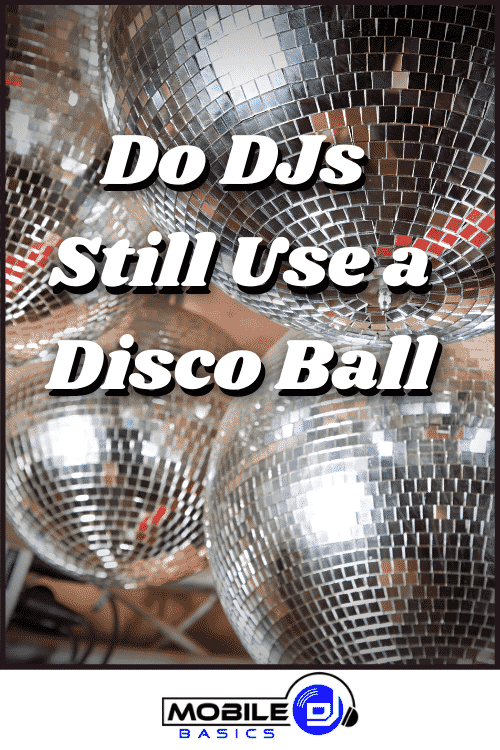
From discovering new songs to getting more gigs, I’m excited to share the wealth of knowledge I’ve gained through many years of DJing. [email protected]


